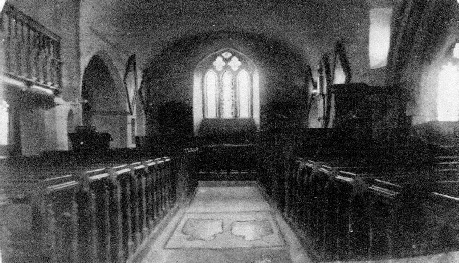

‘When Exeter was down Thorncombe was a town’ revisited
False truth is bread and butter to local historians, often signposting starting points for intriguing research. While perusing the late June Ede’s WI History of Thorncombe (1964) I came across the oft quoted ‘When Exeter was down Thorncombe was a town’, which to my mind whenever I have heard it, has always begged a question. This is what I came up with in pursuit of an answer. The census figures for the 20th century show that Thorncombe’s population gradually shrank while Exeter’s increased. Nor could I find any evidence that Thorncombe’s prosperity was linked to a decline in Exeter’s economy during the 18th and 19th centuries. However, many Thorncombe old chestnuts, often contain a grain of truth. The population of Thorncombe parish between 1674 and 1881 was considerably higher than the 2011 census figure of 700.
So perhaps this is what this phrase refers to?
Surviving wills, property deeds, censuses and other papers spanning the late 17th and late 19th centuries paint a picture of a community which variously included members of the gentry, sheep and dairy farmers, woollen cloth merchants, spinners, weavers and dyers, tradesmen, agricultural and building labourers and other unskilled workers, some latterly involved in flax processing. Paupers dependent on financial support from the parish included the long term sick and disabled, single mothers, widows, the elderly and those trapped in what we now call the gig economy.

The figures in the table above are drawn from surviving historic sources. A standard
4.5 multiplier has been used where appropriate. This useful tool evolved through
the work of The Cambridge Group; academics based at the university and specialising
in demographics. One of the group’s publications, Wrigley and Schofield’s standard
reference Population History of England 1541-
References
1. T. Stoate, (Editor), Hearth Tax Return, Lady Day 1674 (1982), 14-
2. A. Whiteman (Editor), The Compton Census of 1676: a Critical Edition (1986), 273; P. Jackson, ‘Non conformity and the Compton Census in late seventeenth century Devon’ in K. Schurer & Tom Arkell, Surveying the People ... (1992), 116. The close correlation with the Hearth Tax calculation suggests reasonably accurate figures.
3. E. Higgs, Who in Thorncombe did not sign the 1723 Devon Loyalty Oaths and Why?, (2010), Friends of Devon Archives, Eighteenth Century Project . Online at www.foda.org.uk (accessed 24 .07.18)
4. www.foda.org.uk/visitations/1744. Standard 4.5 multiplier applied (accessed 24.07.18)
5. G. Pulman, Book of the Axe... (1844) , 212: ‘ Mr Chapple speaking of Thorncombe church about the year 1770 says that it is not large enough to contain a fourth part of the inhabitants.’; Dorset History Centre D/RGB/LL108 Thorncombe Church Coloured Plan. Late 19th century.
6. Census of England & Wales 1801-
7. Exeter Poor Law Registration District
EVE HIGGS
October 2018


| History of the Trust |
| Constitution of the Trust |
| Minutes of meetings |
| Archived Minutes |
| Obituaries |
| Contacts |
| Newsletter |
| Newsletter Archives |
| Past Events |
| Blackdown Walk Aug 2013 |
| Bluebell Walk May 2013 |
| Pollinator Survey June 2013 |
| Visiting new-born lambs 2013 |
| 2014 Christmas Sale |
| Trees |
| Commemorative Trees |
| Johnson's Wood |
| Geology and geography |
| Wildlife |
| Birds |
| Chard Junction Nature Reserve |
| Nature Reserve pictures |
| Butterflies |
| Butterfly surveys |
| Photo albums |
| Artists and writers |
| Footpaths |
| General |
| Poor relief |
| Houses |
| In the news |
| Industry |
| Pubs |
| Religion |
| Reminiscences |
| Schools |
| 17th and 18th centuries |
| Harry Banks |
| Pissarro |
| Hedge Dating |
| Once upon a Thorncombe Road |
| Thorncombe's Lost Roads & Hidden Holways |
| Thorncombe's History |
| First World War Thorncombe men |
| Thorncombe's Changing Boundaries |
| When Exeter was Down Thorncombe was a Town |
| Parish Poorhouse and Workhouses |
| The poor |
| Life in Thorncombe's Workhouse |
| Chard St Bakery & Forge |
| Holway Cottage |
| Forde Abbey |
| Gough's Barton |
| Holditch Court |
| Upperfold House |
| Sadborow Hall |
| Wayside |
| Thomas Place and The Terrace |
| Pinneys |
| 1 & 2 Church View Chard Street |
| Dodgy local ice-cream |
| Gribb arsenic poisoning |
| Industrial relics |
| Westford Mill |
| Thorncombe's Flax and Hemp Industries |
| Broomstick Weddings |
| Royal Oak |
| Golden House |
| St Mary's Church |
| Thorncombe's West Gallery Choir |
| Thorncombe's Chapels |
| Quakers |
| Commonwealth vicars |
| Who was William Bragge? |
| Holditch memories |
| St Mary's School |
| St Mary's School photos |
| Forgotten epidemic |
| Jacobites |
| Walk 1 |
| Walk 2 |
| Walk 3 |
| Walk 4 |
| Walk 5 |
| Walk 6 |
| Walk 7 |
| Walk 8 |
| A Village Walk. Walk 9 |
| Walk 10 |
| Rights of Way information |
